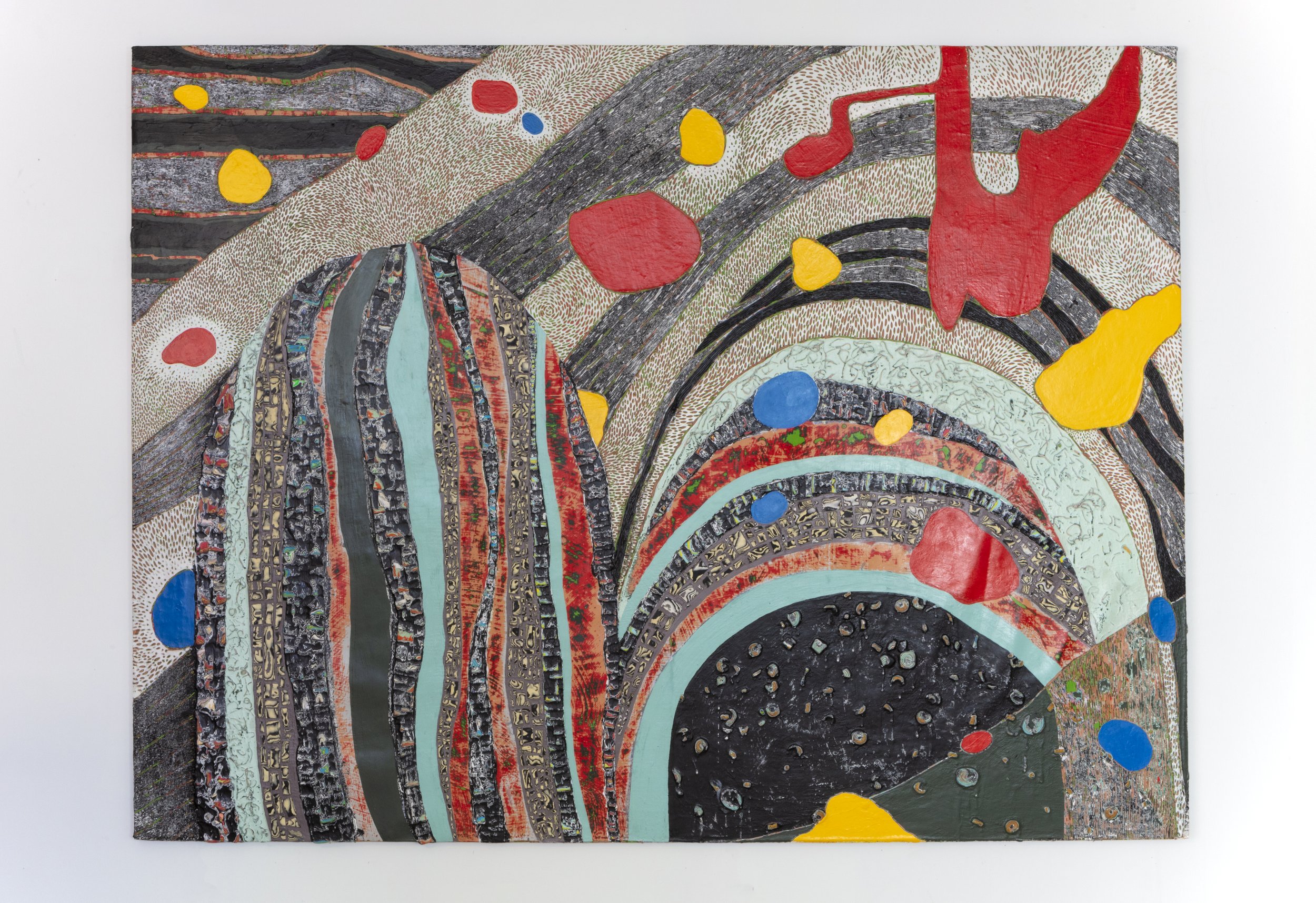Valley of Mexico (CDMX), 2023. Acrylic latex and found paper on canvas. 75” x 136”. Attributed to Alberto, Kyokawa, & Otsubo (2018).
Mexico City, one of the world’s most complex urban landscapes, sits atop layers of ancient history—both human and geological. Built on a former lake bed surrounded by volcanoes, the city rests on sediment and ash from thousands of years of volcanic activity. That history is still alive: Popocatépetl, one of the region’s most iconic volcanoes, erupted as recently as early 2023, sending ash into parts of the city and reminding residents the ground beneath them is always shifting.
Like Houston, Mexico City faces the growing challenge of land subsidence. Both cities are sinking due to overpopulation, unchecked development, and aggressive groundwater extraction. Mexico City’s long history of managing this issue is now being studied as a model for addressing Houston’s own sinking problem—where cracked foundations and failing water systems reveal the layered consequences of building on unstable ground.
This painting captures that layered geology beneath the Mexico Basin. Reds, oranges, and browns represent volcanic origins; blues and greens reflect shifting tectonic and hydrological forces. The colors echo those found across the city’s homes and buildings, while the abstract forms connect Mexico City’s physical foundation with its cultural one—a landscape quilted together by both natural upheaval and human history.






